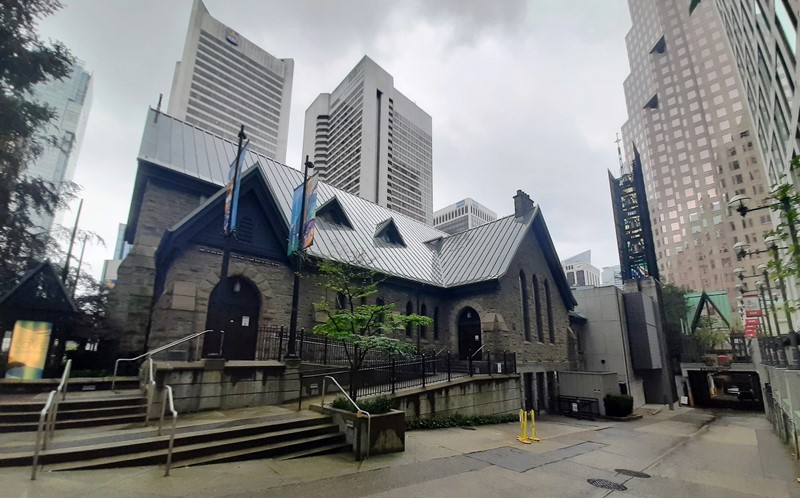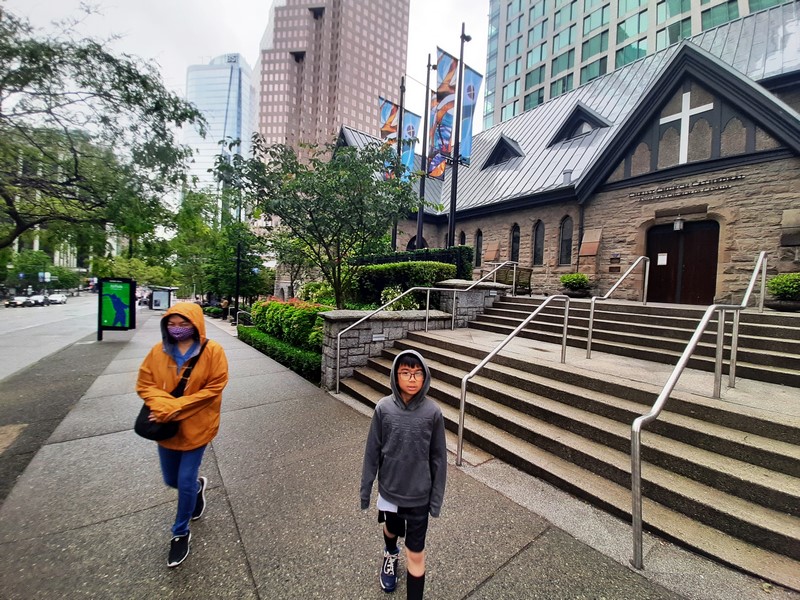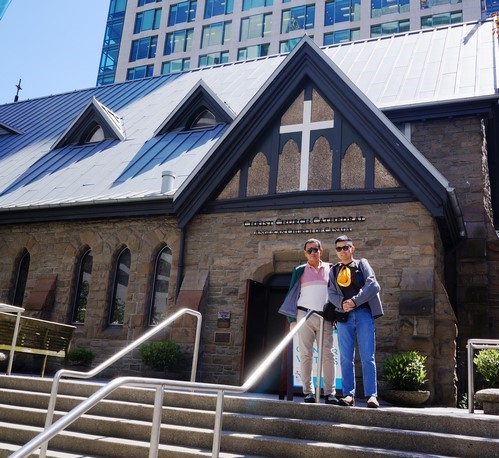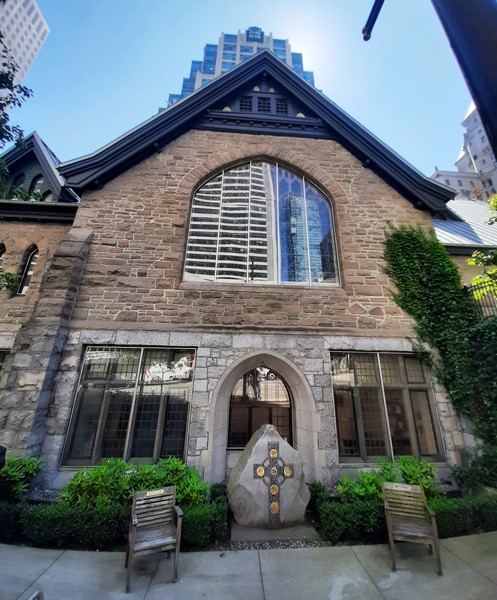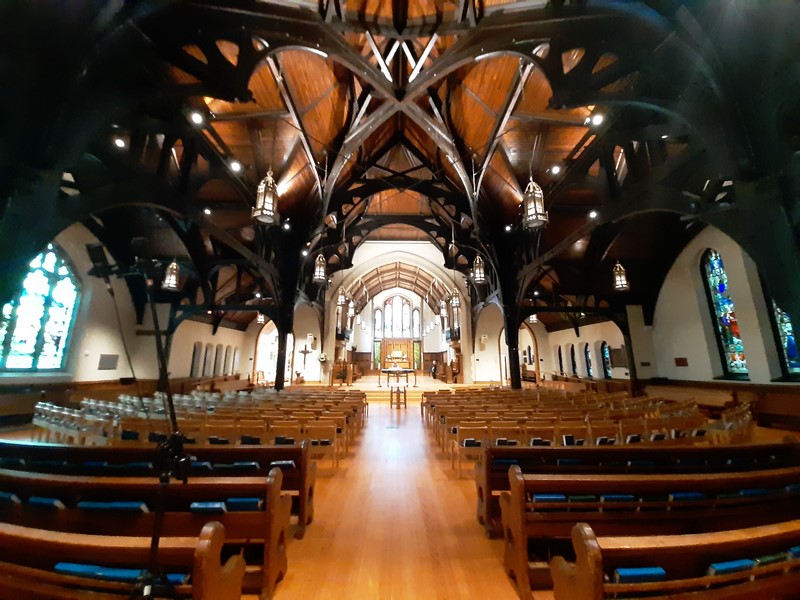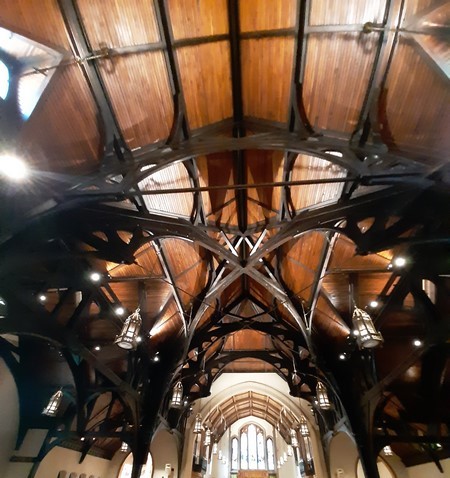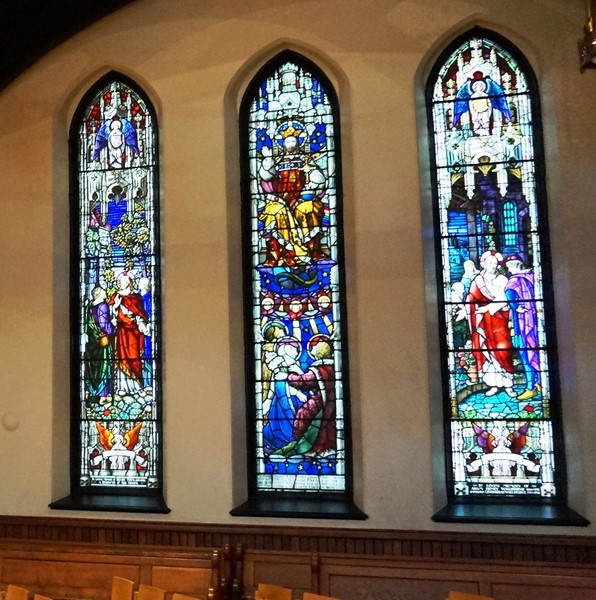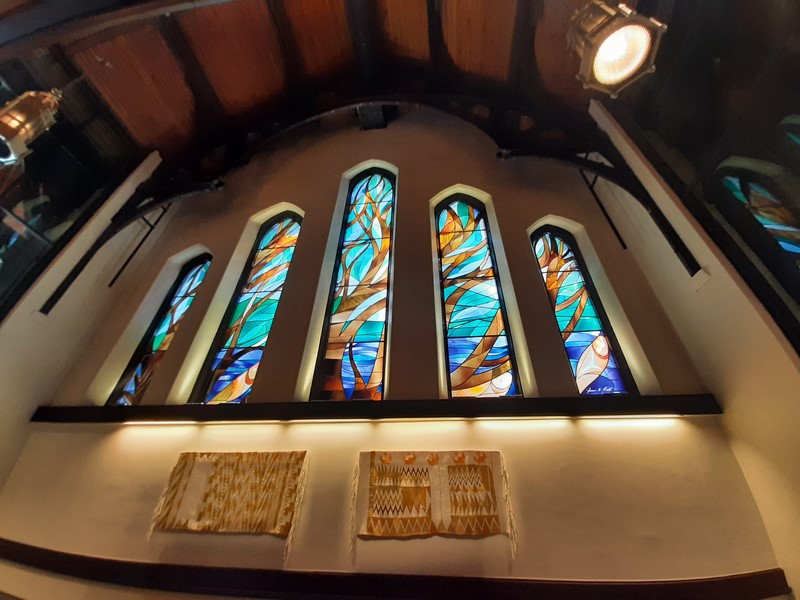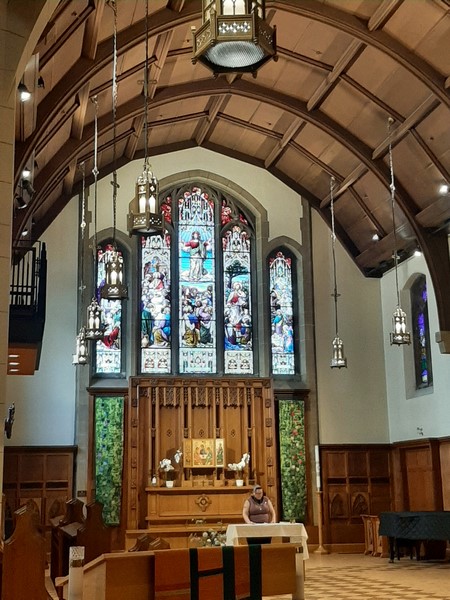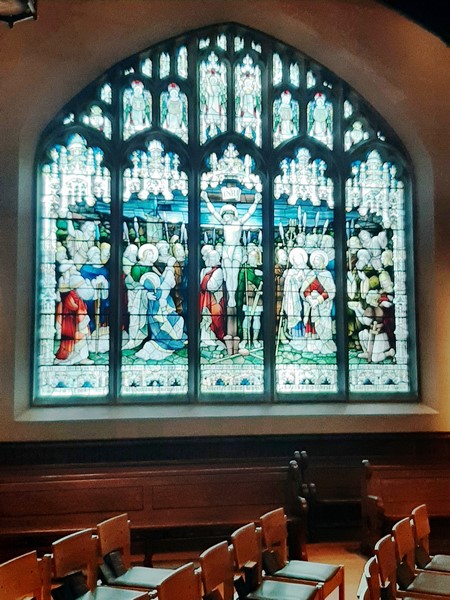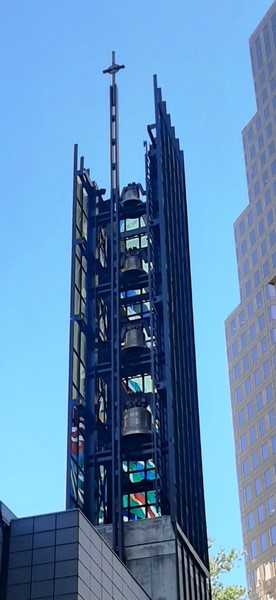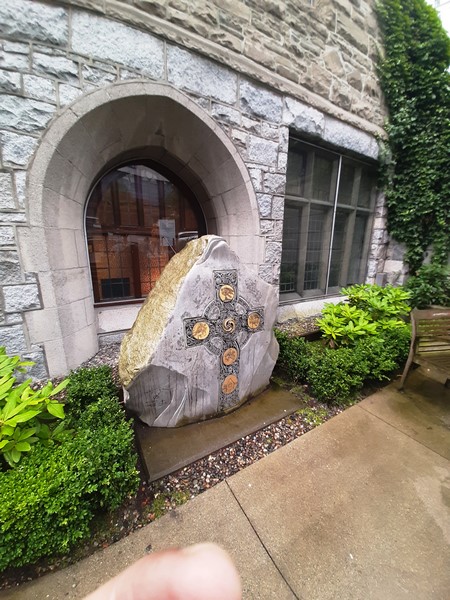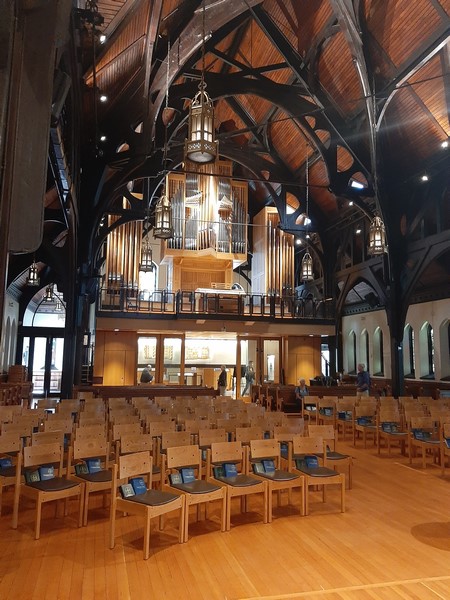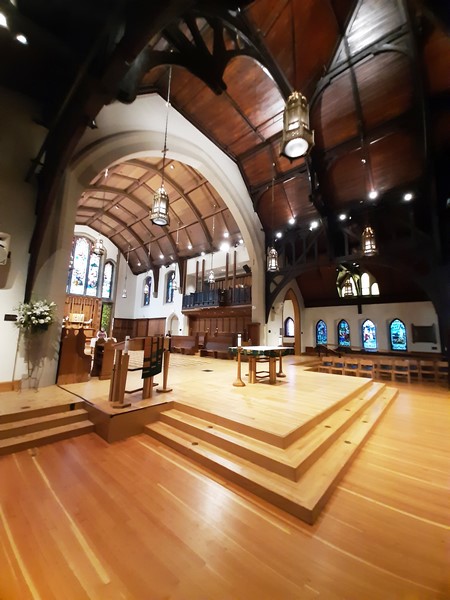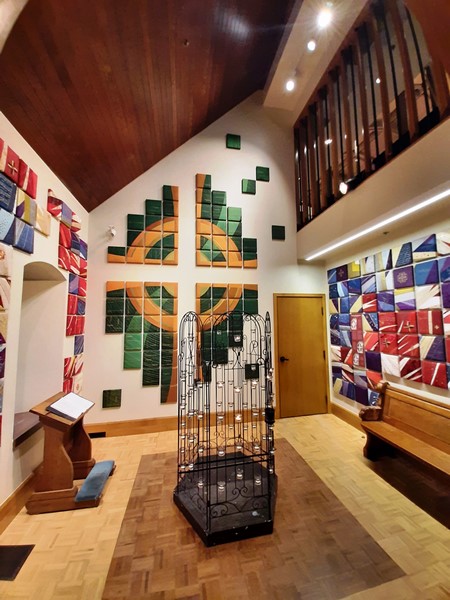Just 650 m. from the Cathedral of Our Lady of the Holy Rosary is the gorgeous Christ Church Cathedral. The second cathedral church of the Anglican Diocese of New Westminster of the Anglican Church of Canada, it is a daughter church of St. James’ Anglican Church.
Check out “Cathedral of Our Lady of the Holy Rosary“
Set among high-rise buildings, Christ Church Cathedral is the Regimental Church of the Seaforth Highlanders and is in the process of being designated Regimental Church of the BC Regiment, Duke of Connaught’s Own. It is also the church at which the British royal family worships when in Vancouver.
Here is the historical timeline of the cathedral:
- On December 23, 1888, the first service was held, without a church building, at 720 Granville Street.
- On February 14, 1889, a building committee was formed to collect the necessary funds for the erection of the church to be located on land bought from the Canadian Pacific Railway (CPR). A key negotiator in acquiring the property is Henry John Cambie, chief engineer of CPR’s Pacific Division and people’s warden of the new church.
- By October 1889, Christ Church’s basement was built
- On October 6, 1889, the opening service was held for 52 parishioners.
- By 1891, the CPR objected to the unfinished building that had quickly been nicknamed the root house. It was viewed an “eyesore” and the parishioners feared they would lose their location due to lack of funds to complete the building.
- In 1892, the architect Robert Mackay Fripp submitted a proposal for completion of the church.
- On July 28, 1894, after a financing scheme was developed by a parishioner, the cornerstone was finally laid.
- On February 17, 1895, the church was dedicated.
- In 1905, a balcony, covering the narthex area and containing a wood railing in a Gothic pattern, was added
- By 1909, the first expansion was done.
- By 1911, the first organ, which used a human blower hired at $5 per month, had already worn out and was replaced by the new Robert Hope-Jones Organ manufactured by Wurlitzer.
- In 1920, electricity replaced candles for lighting.
- In 1929, the Archbishop of New Westminster constituted Christ Church as the Cathedral Church of the diocese replacing Holy Trinity Cathedral located in the City of New Westminster.
- In 1937, the bronze lanterns now in the church were installed at the nave.
- In 1949, after many building alterations, the $30,000 Casavant Freres organ, constructed partially of recycled wood, surplus war surplus parts and remnants of the Wurlitzer, was installed. It had more than 2,700 pipes and a 600 lb. motor.
- In 1971, the church membership voted to demolish the building and replace it with a hi-rise tower complex designed by Arthur Erickson. The redevelopment was opposed by the public.
- In 1976, after much lobbying, the cathedral was named a Class A Heritage building in the municipality of Vancouver and the Province of British Columbia.
- In 1995, an eleven-year program of restoration and renewal was begun.
- During the spring and fall of 2004, the Kenneth Jones tracker organ was installed.
- In 2004, the church was extensively upgraded and the original fir flooring, cedar tongue and groove ceiling and stained glass windows were restored.
- In November 2016, a bell tower was inaugurated.
The church, built in the Gothic Revival style (with Romanesque and Tudor details), has a granite and sandstone façade and is laid out in the classic Latin Cross plan.
Its stunning interior, circumnavigated by wood wainscoting with a quatrefoil cornice, has a beautiful and spectacular hammer beam truss (in the style of English halls and churches dating back to the 1300s) ceiling made of cedar planking and ceiling beams.
Its 32 beautiful stained glass windows depict Christ-centered themes, famous people and World War I.
The floor was constructed out of old growth Douglas fir. Wood arches and tracery details separate the side aisles from the nave.
The modern, semi-abstract “Tree of Life,” spanning 5 stained glass windows (the tallest is 19 ft. high) at the back of the church, was created, in brown tones, by aboriginal Musqueam artist Susan Pointe, executed by Yves Trudeau (of Studio One Glass Art) and dedicated on April 5, 2009. It depicts salmon (in 4 of the panels) and waters at the base, leaves and trees in the central portion and mountain and birds above.
Another three stained glass windows, of three disciples of Jesus Christ, were designed by the famous William Morris of England, the most celebrated champion of 19th century “Arts and Crafts” Movement.
The open glass and steel bell tower, at the northeast side of the cathedral, has a zinc roof. Its four church bells, cast in France, are rung daily at 8 AM and 6 PM and before church services.
The spire glass features a design by Canadian artist Sarah Hall. A venue for musical performances, the church’s acoustics are phenomenal and the Choral Eucharist (10:30 AM) and Georgian Chant Services (9:30 PM) are performed every Sunday.
The Celtic cross, which is found on both the cathedral’s exterior and interior, represents the roots of the Anglican Communion in the British Isles. The spindle whorl and the three salmon in the style of the Coast Salish Nation, represent the First People of Canada and the original inhabitants of the west coast.
The Greek letters Chi (X) and Rho (P), in the center, are the initials of the words Christus Rex (Christ the King). The motto “I hold before you an open door” (Revelation 3:8) is the title of the first sermon preached by Rev. H. B. Hobson, the rector, in the cathedral on December 23, 1888.
The beautiful and huge tracker organ, in the south gallery of the cathedral, was built in 2003 by Kenneth Jones in Bray, Ireland, and installed, over 10 days, in April 2004. It is the first Christ Church Cathedral organ custom built to speak with optimum effect in the sanctuary. It comprises a three manual console and 2,500 pipes (1,700 salvaged from the Casavant Freres), wooden trackers and intricate parts sourced from all over Germany.
The fine, carved stone reredo, dedicated in 1923 as a World War I memorial, took almost two years to complete. Depicted in this stone screen are St. Martin of Tours, St. Lawrence and St. John the Baptist.
Christ Church Cathedral: 690 Burrard Street , Vancouver, British Columbia V6C 2L1, Canada. Tel: +1 604-682-3848. E-mail: reception@thecathedral.ca. Website: www.thecathedral.ca. Open Mondays to Fridays, 10 AM to 4 PM. Admission is free but donations are welcomed. Coordinates: 49°17′03″N 123°07′13″W.
How to Get There: the cathedral, located right across the Burrard Skytrain Station, is located on the northeast corner of West Georgia Street, directly across from the Fairmont Hotel Vancouver in Downtown Vancouver. It is also a 3-min walk from the Vancouver Art Gallery


